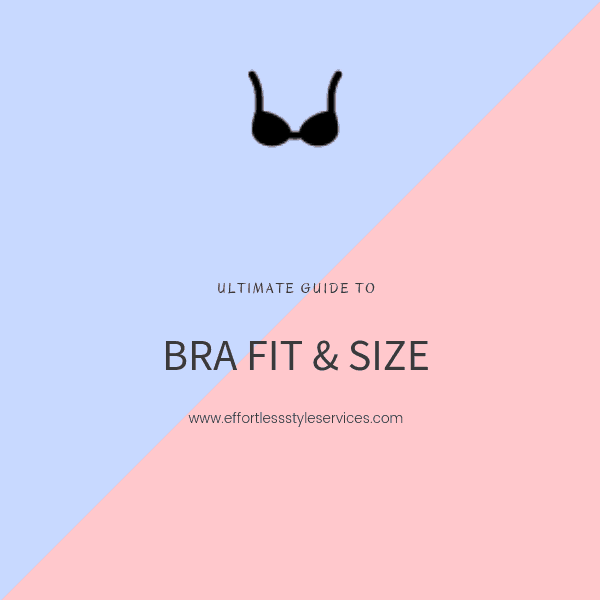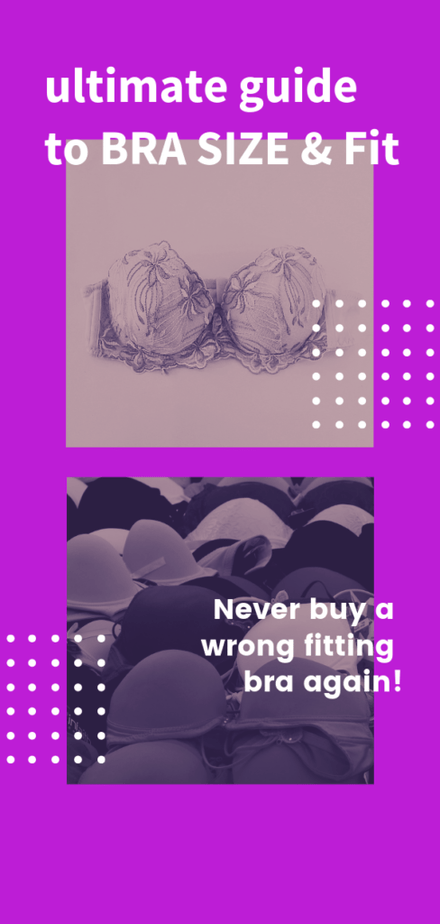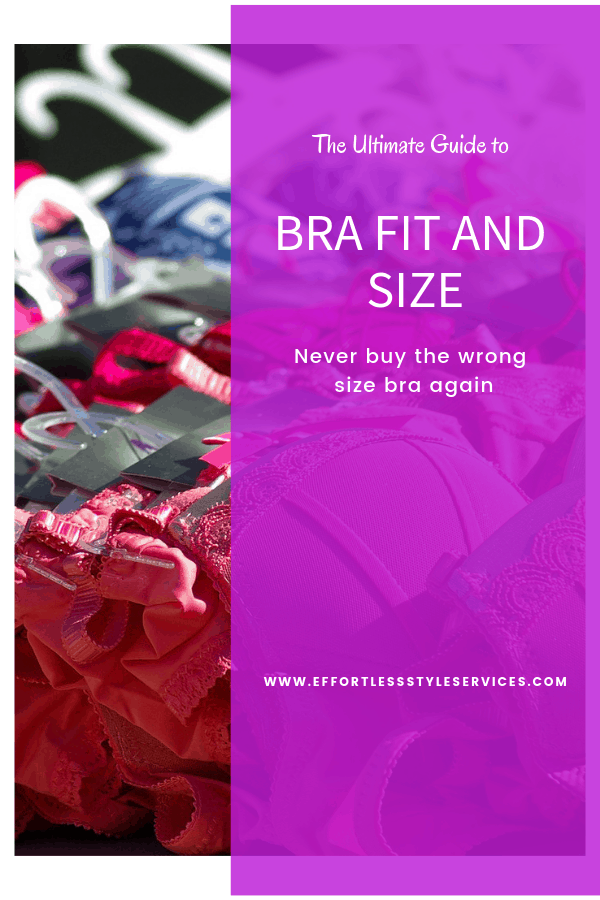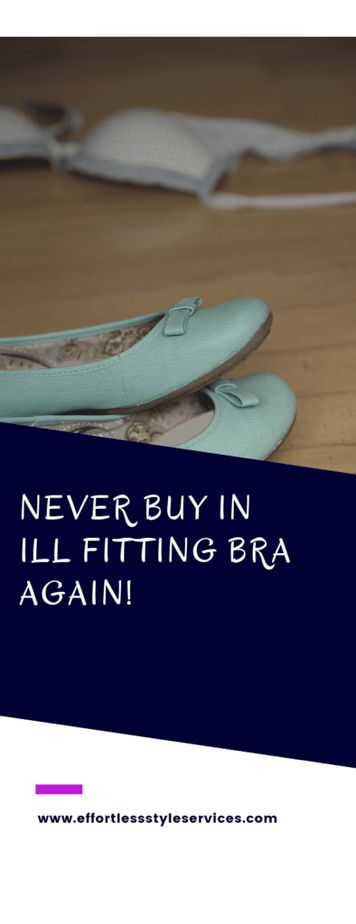
Let’s get personal and talk about bra fit. I don’t know about you, but my second pregnancy really took a huge toll on my body, especially in the bosom area. I expanded two cup sizes during my pregnancy. Now, post nursing, I’ve lost 3 cup sizes from my normal, pre-pregnancy size and not only that, but the girls now possess a very saggy, flap-jack like quality. I guess a 5 cup swing was too much for them to handle. I know I need to go invest in some new bras, but I’m kind of hoping they’ll bounce back at least a tiny bit. It’s back to the drawing board and back to the store to get some well fitting undergarments with optimal support.
How do you know your current bra fits?

That brings us to the all-important question “How do you know if your bra fits properly?” and if your bra doesn’t fit how do you know which size you should get. We’re going to evaluate several different checkpoints of our current bras to identify some fit problem areas.
The Band
The band should sit horizontally on the body. It should not ride up in the back; this indicates that your band size is too big. If it cuts into you or feels uncomfortable, it is too small. If your bra fits correctly, there should not be anything protruding over the band. When purchasing a new bra, make sure that you use the last or next to last hook. The band will lose elasticity over time and stretch a bit. As this happens, move into the smaller hooks. If you start out at the smaller hooks, you won’t have anywhere to go and your bra will become too big as it stretches.
The Gore
The section of fabric at center front between the cups is called the gore. The gore should lay flat against your chest wall. If it does not lay flat, you probably need a bigger cup size and possibly a smaller band size. This brings us to our next checkpoint, the cups.
The Straps
How do the straps fit? If they are too tight and dig into you, try letting out the strap until it sits comfortably on the shoulder. You should be able to insert two fingers under your straps comfortably. If you’ve loosed your straps as far as you can and they are still digging into you, you need a larger cup size. Straps that are too loose and constantly slip off your shoulders indicate your cup size is most likely too big and you should go a cup size smaller. If you adjust the straps and they don’t keep their position, the bra you are wearing may be old and need to be replaced.
The Cups
When you have achieved the perfect bra fit, your breast should fill the cup completely without spilling out anywhere. Common spillage locations are the top of the cup, under the arms and under the cup. If you suffer from spillage, go up a cup size. Gaps or wrinkles will appear in the cup if it is too big, go down a cup size. Shaped wires from the cup digging into you indicate that the cup is the wrong size, but it could also mean that the wire is misshapen. If you’re trying on a new bra that has a pokey wire, move along to the next one.
How do you Measure your Bra Size?

As you all know, there are two aspects of bra sizing, the band,and the cup. Let’s start with the band because it’s easier. There are a couple of different ways to determine your band size. I’ll start with the most complicated and then tell you the easiest. You’ll need your trusty tape measure, of course.
The first step to finding the perfect bra if is to measure around the rib cage just under the band of your bra. If the number is even, add 4” to it. If it is an odd number, add 5”. The second, easier way is to measure the chest which is just above the bust under your arms with no addition required for this measurement. When taking both measurements,
For the cup measurement, make sure you wear the best fitting bra that you currently own, that has good support and is not padded. You’re going to measure around the fullest part of your bust at the nipple level. Breath in and let your chest expand. Use the measurement of your bust when your lungs are fully expanded. If in between, round up to the nearest inch.
Calculating the Band Size
Subtract the band size from the full bust measurement (using whole numbers). Every inch difference is a cup size. Less than an inch difference is an AA, 1”- A, 2”- B, 3” – C, 4”-D, 5”-DD, 6”- DDD. Some manufacturers will name these differently after D. For example, some will use DDD and others will use F. Now would also be a good time to know that this is the US sizing standard. UK and other countries have different specifications.
When shopping for a new bra, you can start from scratch using your measurements or start from the size you’re currently wearing and go up and/or down as needed from there.
What is the order of bra sizes?
There is some variety in the sizing of bras offered by manufacturers. Some offer sizes as small as a 28AA and as large as a 58J. I know this is subject to change as the market is always adjusting to demand. If you’re aware of a size larger that is available off-the-rack, let me know in the comments so that I can share with my readers. Bra sizing is complicated, that’s why is so hard to achieve the right bra fit.
The band sizes range from 28 to 58, but most manufacturers don’t carry this range of sizes. The most typical is from 32 to 40. Cup sizes generally range from AA, which is the smallest to DDD, but some manufacturers make up to a J.
Here is the order of bra size from smallest to largest going from overall bust circumference then band size:
32AA, 32A, 32B, 34AA, 32C, 34A, 32D, 34B, 36AA, 32DDD, 34D, 36B, 34DD, 36C, 38A, 34DDD, 36D, 38B, 36DD, 38C, 36DDD, 38D, 38DD, 40C, 38DDD, 40D, 40DD, 40DDD
Confusing right? Say you have a bust circumference also called the full bust measurement of 38”. You could either be a 36B, 34D or 32DDD. Let’s not add to the confusion if you’re measurement isn’t right on the dot. If you were 37 ½”, let’s throw in 36A, 34C, and 32DD as well. That’s 6 different size bras you could possibly wear that will fit your overall bust circumference. That’s why it’s so important to be able to determine your band size accurately and not only that but to try the bra on too before making a purchase.
How do you find a bra that works for you?
The most difficult part of finding a bra that works is the fit. Use one of the following as a starting point size.
- Start with your measurements to determine your bra size
- Use the size that you already own
Even if you’ve done your measurements perfectly, it’s not a guarantee that the determined size will fit. There are variations among manufacturers and even different styles. You could order a series of bras online, but I find it easier to just go into the store and try them on… instant feedback and evaluation. Put on your starting point size. Go through the fit evaluation steps outlined above. To help you out, I’ve created a bra fit shopping checklist. Get it by filling out the form below.
The Bra Fit Checklist
It’s important that you only change one variable at a time because you always need a constant. Don’t go up a cup and a band size at the same time, or up in the cup and down in band. Set your band size first, then move onto the cup. Go through one aspect of the fit, starting with the band. If the band fits horizontally under your bust and does not ride up or dig into your skin with the closure at the first or second outermost hooks, the band size is correct. Go up or down a band size until you find one that fits.
Next we’re going to be adjusting the cup. Make sure the gore of the bra sits against your chest wall. If it doesn’t, go up a cup size. Once you get to a size where the gore lays flat like it is supposed to, now let’s look at the straps. Once you have the straps adjusted, look at the cup and adjust the cup size up or down as needed.Consider the style of your top
Bra Styles
Strapless/ off the shoulder/ asymmetrical
For strapless, off the shoulder tops or asymmetrical styles with only one shoulder, you’ll need a strapless bra or a convertible bra with multiple configurations.
Halter
For a halter top, you can also wear a strapless bra or convertible style bra in which the straps can be reconfigured into a halter configuration.
Racerback
For a racerback top you can wear a strapless bra, a convertible bra with the straps configured in an “X”, a racerback bra or a “T” back bra.
Backless
Easy enough. . . with a backless top, wear a backless bra. They aren’t literally backless, the back is just lowered.
This convertible bra from Amazon can meet your needs for all the above.
Plunging of deep-V necklines
For a plunging or deep-v necklines, you’ll need a plunging bra. Check out this one on Amazon.
Open back
For an open back shirt, select a bra with details on the back like lace and make the bra design an element in your outfit. Here’s an affordable option from Amazon.

So what are your favorite bra brands and what do you love about them? Leave me some comments below. I’d love to hear your favorites because I need to go on a bra shopping trip myself since none of mine fit now post pregnancy/post breastfeeding. What are your recommendations? Have any of you tried Third Love? I’ve seen them advertised everywhere, but haven’t had the guts to drop $68 on a bra yet. Stay up-to-date with helpful tips by following my Fit Pinterest board.
Do you want to perfect your clothes fitting skills with the rest of your wardrobe too? Click here for other fit posts.


